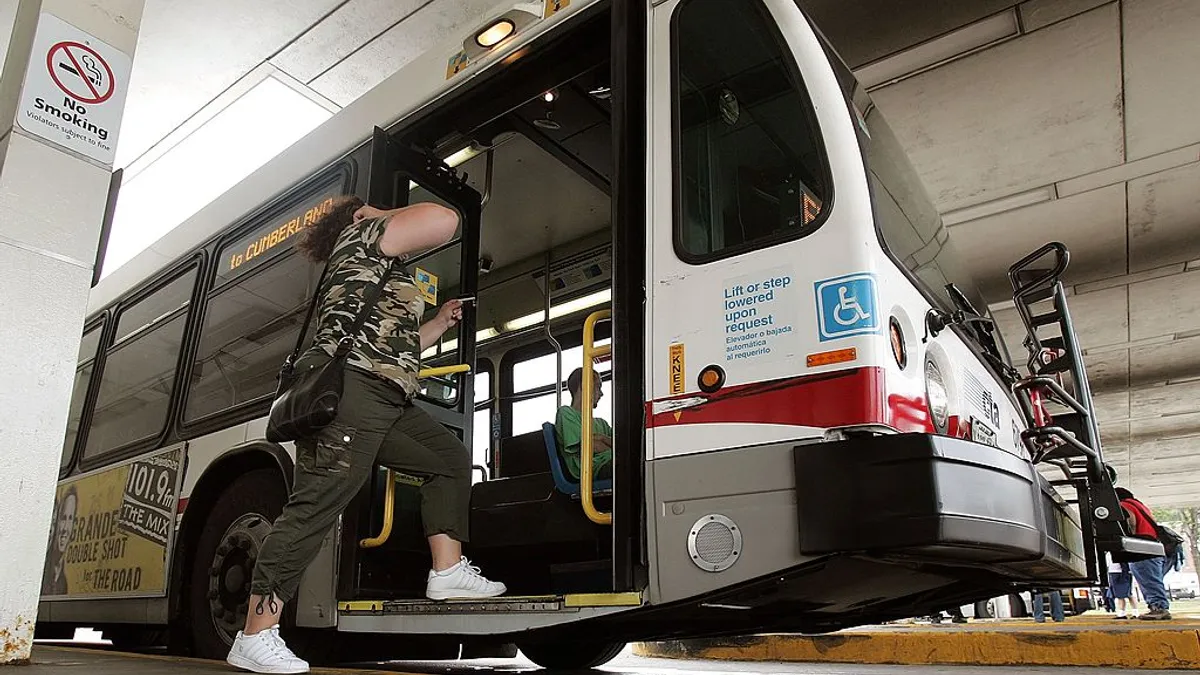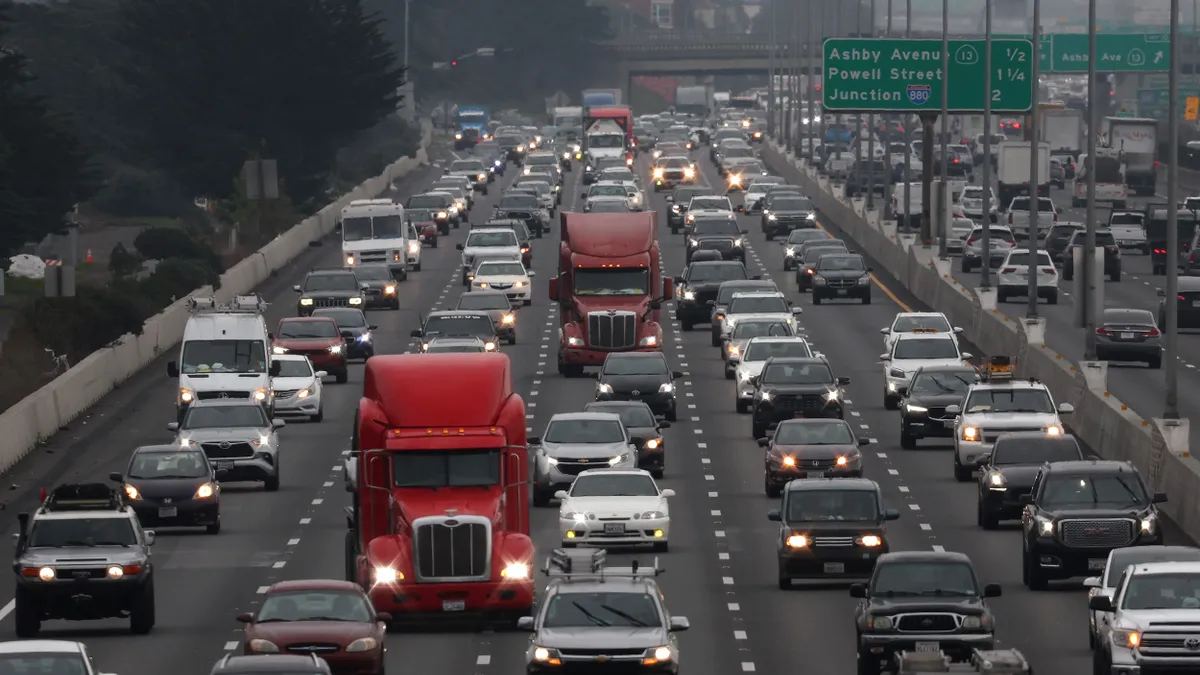Advancing legislation in Congress gives transportation labor leaders hope for creating a national training center for transit workers that could help them prepare for using new technologies and bringing future generations into the sector.
The Investing in a New Vision for the Environment and Surface Transportation in America (INVEST in America) Act includes provisions for a national public transportation workforce training center, a long-held priority for organized labor. The U.S. House of Representatives passed the bill Thursday morning and sent it to the U.S. Senate for consideration.
The bill, which reauthorizes the nation's surface transportation legislation, comes as labor leaders warn that developments like automation and electrification risk leaving workers behind if leadership does not prepare them for the future.
"I think the government and the trade union movement and other stakeholders, the manufacturers of the technology, should be developing a system that's always looking 20 years to the future, to ensure the nation's workforce isn't ambushed by technology going forward," Transport Workers Union of America (TWU) President John Samuelsen said in an April interview. "There is a great ambush going on right now. There are many who work in diesel buses in cities across America that have no idea of the danger they're in."
A growing skills gap
The Transportation Trades Department of the AFL-CIO (TTD) paints a troubling picture about the state of the public transportation workforce and the work ahead. TTD estimates around 400,000 Americans work in the sector, but the median age of workers in many front-line transit jobs is approaching 52 years old, meaning a large portion of the workforce will retire in a few years.
And the evolution of transportation technology could leave some people behind if they do not receive the training necessary on new equipment and systems, labor leaders say.
Compared to work on traditional diesel-powered vehicles, servicing electrified buses and trains requires different personal protective equipment, knowledge of their different motors and the use of rubberized tools. Operators must also be retrained, as these vehicles require a new style of driving to reduce strain on the battery from braking. Labor leaders have already called for a "just transition" in the move to electrification.
Similarly, the move to automate buses and trains could mean some workers lose their jobs as their roles get carried out by machines instead of humans, while others will have to be retrained on maintaining those autonomous systems.
TTD said transit agencies do not invest enough in training. The group said that on average, agencies spend less than 1% (between 0.66% and 0.88% of total payroll on training), as opposed to 4% to 5% in many parts of the private sector. TTD President Greg Regan said agencies cannot afford to invest more, as they lack reliable federal funding for workforce development.
A new way forward
The INVEST in America Act looks to rectify that situation, however. One of the bill's provisions would establish what it calls a "national transit workforce training center" as part of the $109 billion it sets aside for transit.
Per the bill's text, the center would develop training programs for "key frontline transit occupations with demonstrated skill gaps," and it would recommend curriculums for academic qualifications and apprenticeship programs. The national center would also build partnerships with counterparts at the state and local level to address skill gaps.
Specific areas the center would look to address include electrification and worker safety, and it would have hands-on learning opportunities as well as classroom-based efforts. Regan said the bill provides essential national leadership on the issue.
"The fact that we have, for the first time, a national transit workforce training center funded in this bill is a major step because the federal government often has to lead in policy that sets the tone for how agencies all across the country work," he said. "You can provide that support and leadership at the federal level that will hopefully create a better environment for training transit workers."
The bill echoes the National Transit Workforce Training Act, introduced in April 2020 in the House and the following September in the U.S. Senate, which would have established a national training center. Neither bill received a vote in its respective chamber.
In the interim, agencies and unions have been trying to fill the skills gaps on a local basis but are finding it difficult without federal help. Amalgamated Transit Union International President John Costa said in an April interview that only about 3% of the group's membership is trained on electric technology and its safe maintenance, and while local chapters have hosted training sessions, a more coordinated national response is required.
"For this [new technology], it's not only on the workers, but what's the impact on our ridership and our communities," Costa said. "[There's] going to be a big demand for technicians to be able to work on this, and if we don't get ahead of this and train our own, we're not going to be able to have these buses on the roads to move riders where they need to go."
Partnering to recruit workers
The bill also would prioritize partnerships between transit agencies, schools and other organizations to promote careers in public transportation, including in underrepresented communities.
TTD said the largest skills gaps are typically in more blue-collar professions in public transportation, such as among electricians, technicians and signal operators, which do not receive training at four-year universities. Instead, more of the Federal Transit Administration's funding and training is spent on management and administrative roles.
By working more closely with high schools and community colleges, Regan said the national training center could help recruit more blue-collar workers and reduce the risk of a labor shortage when people in those positions retire.
And he said it could help address a perception gap about those jobs among some people, who may not realize they are less labor intensive than they were in previous generations. He compared that to how manufacturing jobs have evolved in the last few decades thanks to the automation of some machinery.
"For too long, we have failed to support front-line transit workers from a training perspective; we just have not made the investments in the people who operate our infrastructure."

Greg Regan
President, Transportation Trades Department, AFL-CIO
"Frankly, there was a mindset of the younger people that associated manufacturing work with the assembly lines of the old Ford manufacturing plants, when in reality, a lot of the manufacturing jobs you see these days, especially precision manufacturing, are geared towards computer engineering and use different skills," Regan said. "It's not the same monotonous job, but many people had assumed it was."
As debate continues over investing in infrastructure, either through this surface transportation package or through President Biden’s larger American Jobs Plan, Regan said investing in people is just as important as investing in physical infrastructure.
"For too long, we have failed to support front-line transit workers from a training perspective; we just have not made the investments in the people who operate our infrastructure," he said. "We seem to forget that infrastructure is not only about the physical projects, but about the working people that build, operate and maintain it, and who are critical to making sure that everything operates efficiently and effectively."




















